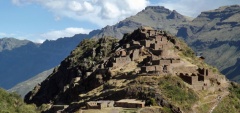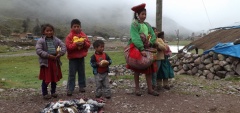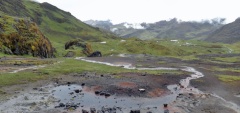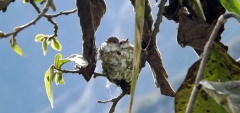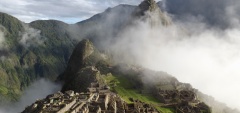A guide to Cusco, Machu Picchu and the Sacred Valley
Having just returned from 3 weeks in Peru I thought I would share my experiences on Cusco, Machu Picchu and the Sacred Valley; famous for being the centre of the Inca Empire and undoubtedly one of the most popular areas to visit in Peru and South America. With permits for the 4-day Inca Trail at a premium there are now a number of different ways to combine the three areas and to suit a variety of different tastes and time scales.
On this trip I was lucky enough to spend a full 7 days in the area, spending a couple of nights in Cusco to take in the city and the nearby ruins, including Koricancha, Sacsayhuaman and the Inca Baths at Tambomachay and then taking part in Mountain Lodges of Peru’s 4-night Lares Program, which combines mountain trekking with cultural excursions and visits to important archaeological sites in the Sacred Valley and Lares Valley. Aside from the obvious benefits of spending each night at a luxury lodge, the Lares Adventure is unique in that it gives you the option to spend the four days trekking different hikes to remote highland lakes (where you will be hard pushed to see anything other than llamas, alpacas and local villagers) or to visit local weaving cooperatives, museums and markets. Each evening, the guides talked us through the options for the following day to decide which activity we wanted to do and there were no restrictions if some members of the group wanted to one activity and the rest of the group another.
The idea behind the Lares Adventure is to take you off the normal tourist track, visit the most popular sites at their quietest and put you in touch with local communities and traditions, which it definitely succeeded in doing for the most part. Highlights for me were walking down to the Pisaq Alto ruins in the afternoon when they were pretty much deserted (the standard format for a Sacred Valley day tour is to visit Pisac in the morning and Ollantaytambo in the afternoon), arriving at the remote Huacahuasi Lodge after an afternoon of hiking and having a delicious lunch by Lake Ipsaycocha at an altitude of 4500m. The lunch is prepared by the lodge’s chefs who bring all of the supplies from the lodge on foot, cook and then go back again; no small task when you consider it took us 4 hours to walk from the lodge to the lake!
The final two days of the trek are split between the ancient town of Ollantaytambo and Machu Picchu, taking the Expedition train to Aguas Calientes. After spending the night at the peaceful Inkaterra Machu Picchu Pueblo Hotel with its jungle gardens and hot water pools we took an early bus up to Machu Picchu to visit the site with our guide. Luckily the skies had cleared and we were able to see the citadel in all its glory, which doesn’t stop being spectacular however many times you visit! For those not bothered by heights then climbing Wayna Picchu promises some of the best views of the citadel but if you don’t manage to buy your tickets in time then the 45 minute walk up to the Sun Gate is a good alternative and gives you an opportunity to sit and take in the views.
After Machu Picchu and a really enjoyable 5 days on the Lares Program, it was back to Ollantaytambo by train and then back to Cusco by road. Although this program probably isn't for those who are looking for an out-and-out trekking experience (the Salkantay Program is more challenging and involves hiking from lodge to lodge) the Lares Adventure is a great way to combine the Sacred Valley and Machu Picchu and gives you more of an insight into local traditions and way of life in the Andes. Furthermore, for those who are unsure about how they are going to react to the high altitudes, it gives you the freedom to take an easy day if you need to and still make the most of the area.
Follow the link to see the day-by-day itinerary: The Lares Adventure to Machu Picchu

